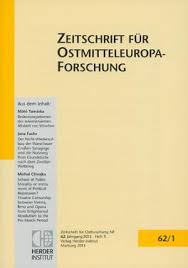Die Erinnerung an die Judenvernichtung im polnischen Film vor, während und nach dem Umbruchsjahr 1989. Das Beispiel Andrzej Wajda
Remembering the annihilation of the Jews in Polish films before, during and after the 1989 turning point. The Example Andrzej Wajda
Author(s): Michael ZokSubject(s): Jewish studies, Post-War period (1950 - 1989), Film / Cinema / Cinematography
Published by: Verlag Herder-Institut
Keywords: Annihilation of the Jews in Polish films; 1989; turning point; Andrzej Wajda;
Summary/Abstract: The article deals with the representation of Jewish identity in the films of Andrzej Wajda, with particular focus on his visual and stereotypical attributions of what it is to be Jewish. The central element of the inquiry is to investigate whether the ways in which Jewish identity are presented before and after 1989, i.e. under communist rule and thereafter, developed. Three films are examined: Samson (1961), Korczak (1990) and Holy Week (1995). In the process we can identify both breaks and continuities. These can be recognised both in the treatment of male and female gender images as well as in the presentation of PolishJewish solidarity and animosity. The latter topic was especially difficult for film-makers to deal with in the years of the People’s Republic. Wajda tried to do this in Samson, but without success. In the two films which were both made after the 1989 turning point, particularly Korczak sparked off considerable controversy, mostly emanating from the French critics and resulting in a delayed start to the showing of the film. In Holy Week, which was adapted from Jerzy Andrzejewski’s novel, Wajda examined the distance that separated Jews and Poles during the German occupation. The presentation in Wajda’s films gave rise to repeated debate and criticism as the images he showed did not accord with the generally-accepted narrative of the Second World War and Polish-Jewish relations. As a result, they have, particularly in hindsight, proved to be a very thought-provoking contribution to the topic.
Journal: Zeitschrift für Ostmitteleuropa-Forschung
- Issue Year: 59/2010
- Issue No: 4
- Page Range: 523-548
- Page Count: 26
- Language: German

